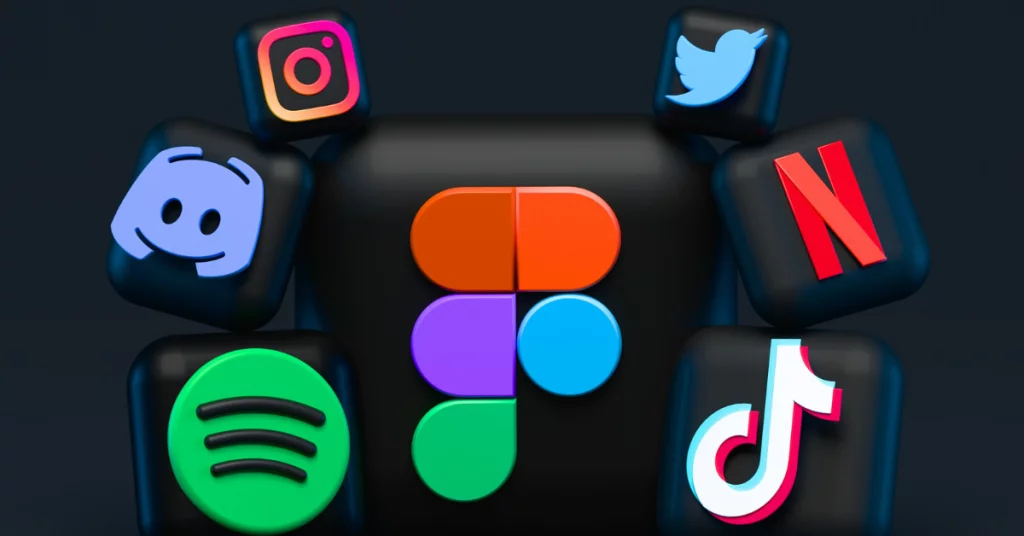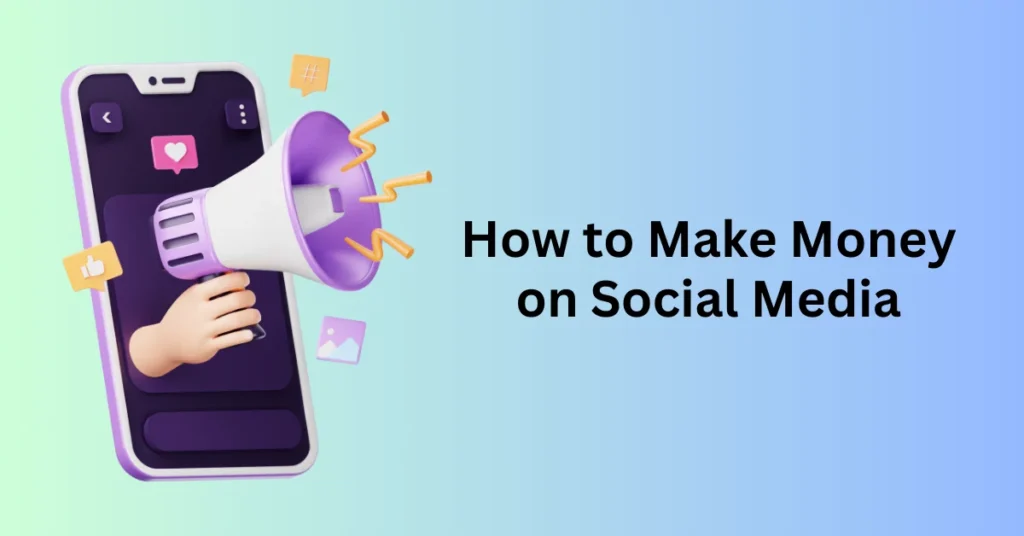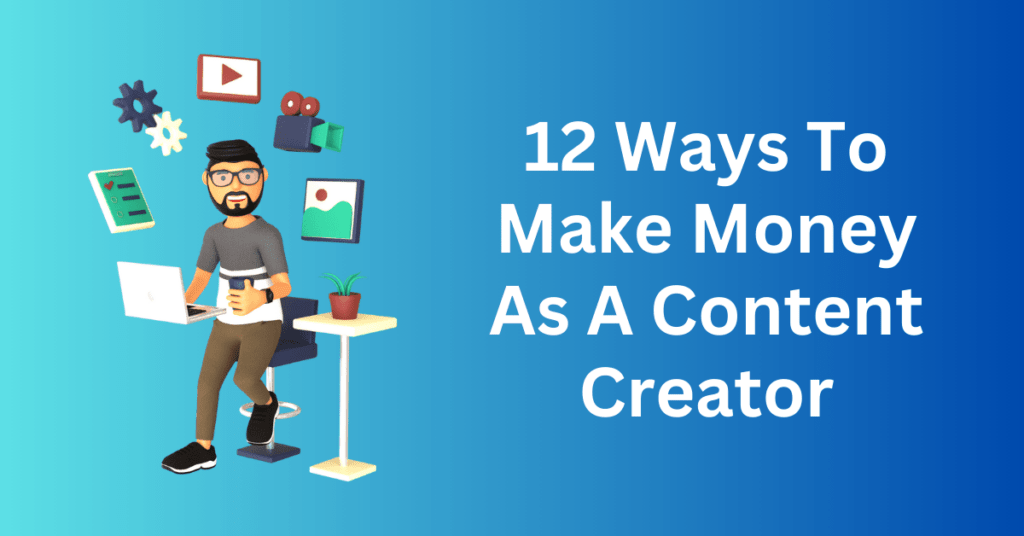Social media isn’t just about sharing moments and memories with loved ones. Instead, it’s also a powerful pathway to generating income and building a thriving online business. With a global audience projected to reach six billion by 2028, the potential to connect with customers and earn money through social media has never been greater.
Our guide offers a comprehensive overview of how to make money on social media. We will also provide insights into various strategies for increasing your income. Explore different approaches and discover how to leverage this expansive platform to turn your social presence into a profitable venture.
Popular Social Media To Start With
Facebook Social Media Platform
Facebook is a versatile social media platform that, moreover, facilitates connection and interaction among users. It allows individuals to connect with friends and family, share updates, photos, and videos, and participate in groups and events. Additionally, for businesses, Facebook offers a range of features, such as Pages for brand presence, the Marketplace for buying and selling products, and a suite of advertising tools designed to help reach a wide audience. Consequently, the platform supports both personal and business interactions through its diverse functionalities and robust network of users.
Instagram Social Media Platform
Instagram is a visually-focused social media platform that is centred around photo and video sharing. Users can follow other accounts, like and comment on posts, and explore content based on personal interests. In addition, Instagram features Stories, which are temporary posts that disappear after 24 hours, IGTV for longer-form video content, and Reels for short, captivating clips that engage users. Consequently, the platform emphasizes visual storytelling and creativity, encouraging users to share and discover content through dynamic and interactive formats.
X Social Media Platform
X, formerly known as Twitter, is a microblogging platform renowned for its short, real-time updates known as tweets. Users engage by following others, retweeting posts, and using hashtags to participate in broader conversations. The platform is distinguished by features such as Spaces, which enables live audio discussions, and Lists, which allow users to organize and view accounts based on categories or interests. X facilitates rapid communication and engagement through its concise and immediate format.
TikTok Social Media Platform
TikTok is a popular video-sharing platform that allows users to create and share short-form videos. Particularly, it is renowned for its algorithm, which enhances the visibility of viral content and fosters community-driven trends and challenges. Key features of the platform include Duet, which enables users to collaborate on videos, Effect House for advanced video editing, and the For You page, which curates personalized content recommendations. As a result, TikTok’s dynamic and engaging format has made it a hub for creative expression and viral content.
YouTube Social Media Platform
YouTube is a leading video-sharing platform where users can upload, view, and share a vast array of video content. It caters to diverse interests, including tutorials, vlogs, music videos, and educational material. Additionally, YouTube supports live streaming, offers YouTube Shorts for brief video content, and features Community posts for engaging with subscribers through polls, quizzes, GIFs, and more. Consequently, the platform serves as a comprehensive space for content creation and discovery, fostering both individual and professional video engagement.
LinkedIn Social Media Platform
LinkedIn is a professional networking platform designed to facilitate career development, business connections, and industry insights. Users can then create profiles that highlight their work experience, skills, and qualifications, connect with colleagues and industry experts, and join groups for networking and discussion. LinkedIn also provides job postings, company pages, and content-sharing features to support professional growth and business opportunities, making it a crucial tool for career advancement and professional networking.
Choosing the Right Social Media Platform
When selecting the most effective social media platform for your business, it’s essential to align your choice with your target audience’s demographics, audience targeting options, and the content formats that best support your business goals. Here’s a breakdown to help you make an informed decision:
Demographics and Audience Targeting
Facebook has a broad user base spanning various age groups. Particularly, 18.4% of global users are men aged 25 to 34, with 13.5% in the 18 to 24 age group. This platform’s diversity makes it suitable for reaching a wide audience, from younger adults to older users.
Instagram is particularly popular among younger demographics, with most users aged between 18 and 24. The gender distribution is fairly balanced, though 50.6% of users are men. Instagram’s focus on visual content makes it ideal for targeting younger audiences with engaging imagery and videos.
X (formerly Twitter)
X is predominantly used by adults aged 25 to 34, followed closely by the 18 to 24 age group. The platform has a higher male user base, with 63.1% of users being men. Besides, X’s strength lies in real-time updates and discussions, making it suitable for timely and concise content.
TikTok
TikTok’s primary user base consists of Gen Z, aged 18 to 24. Men account for 18.9% of the user base, while 17.3% are women in the same age group. The platform excels in short-form video content and trends, appealing to a younger audience through creative and viral content.
YouTube
YouTube attracts a wide range of demographics. Particularly, 12.1% of users are men aged 25 to 34, with 9.4% being women in the same age group. YouTube’s versatility in hosting various types of video content makes it suitable for broad engagement and detailed storytelling.
LinkedIn’s user base is primarily professionals aged 25 to 34, with 50.6% in this age group and 56.4% being men. Besides, it’s the go-to platform for professional networking, industry insights, and career-related content, making it ideal for B2B marketing and professional growth.
Content Type Suitability
Videos
Platforms like YouTube, Instagram, TikTok, and LinkedIn are highly effective for video content. Whether it’s for storytelling, tutorials, or product demonstrations, these platforms support a variety of video formats to engage and inform your audience.
Images
Instagram and Facebook are well-suited for image-based content. These platforms also allow you to showcase products, lifestyle shots, and brand aesthetics through high-quality visuals that capture user attention.
Text
X and LinkedIn are ideal for text-based content. X is great for concise updates and engaging in real-time conversations, while LinkedIn supports more in-depth articles, thought leadership pieces, and professional networking through written content.
To select the best social media platform, consider how each platform’s demographics, audience targeting options, and content suitability align with your brand’s goals. Matching these factors with your marketing objectives will help you maximize engagement and conversion opportunities effectively.
Building Your Social Media Presence
1. Establish a Consistent and Appealing Look
Your social media profile serves as your brand’s digital storefront; therefore, it’s essential to create a cohesive and attractive presence. Start by crafting a bio that acts as a warm introduction, clearly outlining who you are, what you do, and why people should follow you. Additionally, choose profile and cover images that accurately reflect your brand’s personality and values. Since these visual elements form the first impression of your brand, they play a significant role in attracting and retaining your audience.
2. Develop a Content Strategy
A well-thought-out content strategy is key to engaging your audience. Start by understanding what resonates with your followers and tailor your content accordingly. Balance educational posts that provide value, entertaining content that delights or amuses, and inspirational messages that uplift and motivate. Consistency is vital, so maintain a regular posting schedule to keep your audience engaged and your brand top of mind. Experiment with different posting times to find when your audience is most active, and adjust your strategy based on engagement metrics to build a loyal following.
3. Grow Your Audience
Encouraging engagement is fundamental to expanding your reach on social media. To achieve this, promptly respond to comments and messages, and initiate conversations by posing engaging questions in your posts. This approach also helps foster dialogue and encourages followers to share their thoughts. Additionally, show appreciation for loyal followers by giving shout-outs or offering exclusive promotions. By doing so, you can deepen connections and enhance overall engagement.
Tips to Build a Social Media Presence
Consistency is key to maintaining audience interest and attracting new followers. Regularly share high-quality content to keep your audience engaged and interested. Besides, you should develop a posting schedule that balances frequency and content quality to maximize your impact.
Use Hashtags Effectively: Incorporate relevant and trending hashtags to boost discoverability and expand your reach on platforms like Instagram and X. Research popular hashtags within your niche and use them strategically to connect with a broader audience.
Engage With Your Audience: Actively interact with your audience by replying to comments, messages, and mentions in a timely manner. This interaction nurtures relationships and encourages further engagement, making your audience feel valued and heard.
Reward Your Audience: Increase follower numbers and engagement by organizing contests or giveaways that require participants to follow your account. This tactic not only boosts visibility but also incentivizes users to engage with your content.
Create Quality Visuals: Invest in high-quality, visually appealing images and videos that resonate with your target audience. Compelling visuals encourage sharing and enhance your brand’s overall appeal.
Use Paid Advertising: Consider investing in targeted advertising campaigns to reach specific demographics and expand your follower base. Platforms like Facebook, Instagram, and LinkedIn also offer robust advertising options to help you connect with your ideal audience.
Follow Trends: Stay informed about current trends and popular topics relevant to your industry or niche. Engaging with trending discussions can attract followers who are interested in these subjects and keep your content relevant and engaging.
Monetization Strategies

Sponsored Posts and Brand Partnerships
Transforming your social media channels into a lucrative revenue stream involves building meaningful relationships with other brands and businesses. These partnerships can also lead to sponsored posts and collaborative campaigns that benefit both parties.
To attract potential partners, begin by leveraging your social media presence and providing detailed analytics on your audience demographics and engagement metrics. By highlighting your reach and the quality of your interactions, you can then effectively demonstrate your value to brands.
Furthermore, when determining your rates, consider factors such as your audience size, engagement levels, and the budget of the brand you’re working with. Negotiating a deal involves discussing and finalizing specifics, including deliverables, timelines, and exclusivity clauses, to ensure a mutually beneficial arrangement.
Affiliate Marketing
Affiliate marketing offers a way to earn commissions by promoting third-party products or services on your social media platforms. By using unique affiliate links or codes, you can earn a commission on each sale made through your referrals. This model requires minimal upfront investment and provides flexible working hours, making it a popular choice for many.
To get started, join an affiliate program of a specific company, such as Printify, where you can earn a 5% commission on each sale generated by your referrals. Alternatively, you can join an affiliate network like Shopify Collabs or ShareASale, or negotiate custom affiliate agreements directly with brands.

When evaluating affiliate programs, consider commission rates, the duration of tracking cookies, and the level of support offered. This will help ensure you maximize earnings from your referral links while maintaining credibility with your audience.
Best Practices for Promoting Affiliate Products
- Create Engaging Content: Share authentic experiences with the products you promote. This could include personal reviews, demonstrations, or detailed comparisons.
- Maintain Transparency: Clearly disclose your affiliate partnerships to build trust with your audience.
- Diversify Content Formats: Experiment with various formats such as reviews, tutorials, and comparison posts to keep your content fresh and engaging.
- Analyze Performance: Regularly review performance metrics to refine your promotional strategies and optimize your results over time.
Selling Products or Services Directly
Leverage social media to sell products or services directly to your followers. This strategy also capitalizes on social media’s extensive reach and engagement to showcase your offerings, attract customers, and drive sales.
Platforms like Printify make it easy to create and sell branded merchandise directly through your social media channels, providing a seamless experience for both you and your audience.
Learn how to start print on demand business today
Creating and Selling Digital Products
Digital products offer a lucrative opportunity to generate income with minimal overhead. These products can be developed once and sold repeatedly without the complexities of inventory management or shipping.
Popular types of digital products include:
- eBooks: Share your expertise or insights in downloadable eBook format.
- Webinars and Courses: Provide in-depth learning experiences on topics relevant to your audience.
- Printables: Offer useful items like calendars or planners tailored to specific needs such as fitness, productivity, or goal setting.
- Digital Art and Designs: Sell digital artwork, graphics, templates, or design assets to creative professionals or enthusiasts.
- Photography: Offer high-quality stock photos, digital wallpapers, and Lightroom presets.
Music and Audio: Create and sell digital music tracks, sound effects, audio samples, or production templates and presets.
Strategies for Marketing and Selling Digital Products
- Content Marketing: Develop valuable content that addresses your audience’s needs and interests related to your digital products.
- Email Marketing: Build and maintain an email list to nurture potential customers with targeted campaigns and exclusive content.
- Social Media Promotion: Use engaging posts, stories, and ads to promote your digital products on social media.
- Affiliate Partnerships: Collaborate with influencers or affiliates who can promote your digital products to their audience.
- Limited-Time Offers: Create urgency with time-sensitive discounts or bonuses to drive immediate purchases.
By implementing these strategies, you can effectively market and sell your digital products while maximizing your revenue potential.
Using Platform-Specific Features for Social Media Marketing
Each social media platform offers unique features that can significantly enhance your monetization efforts. Here’s how to make money from social media by leveraging platform-specific features:
1. Run Targeted Ads: Utilize Facebook’s powerful ad-targeting tools to reach specific audiences interested in your products or services.
2. Offer Facebook Subscriptions: Allow devoted audiences to support their favourite creators with monthly, recurring payments, providing exclusive content or perks.
1. Sell Products: Tag products in your posts and stories, enabling users to purchase directly from Instagram.
2. Use IGTV and Stories: Create engaging video content through IGTV for longer-form videos and use Stories for short, immediate engagement.
3. Offer Instagram Subscriptions: Share exclusive content and benefits with your followers for a monthly fee.
4. Instagram Badges: Allow viewers to support you by purchasing badges during your live streams for $0.99, $1.99, or $4.99.
5. Gifts on Reels: Fans can purchase and share virtual gifts on the content they love.
6. Instagram Bonuses: Earn from creating engaging content with invite-based limited-time bonuses.
7. Creator Marketplace: Partner with brands to showcase their products and reach new audiences.
8. Use Instagram Ads: Run targeted ads in various formats to reach a wider audience and use analytics tools to track and optimize performance.
X (formerly Twitter)
1. Use X Ads: Promote your tweets to targeted audiences based on interests, demographics, or keywords to increase visibility.
2. Engage in Trending Conversations: Participate in trending topics and hashtags to boost visibility and engagement with a broader audience.
TikTok
1. Create Viral Content: Produce entertaining and engaging short videos that resonate with TikTok’s audience, aiming for viral reach.
2. Join the Creator Fund: Collaborate with brands on sponsored content through TikTok’s Creator Fund.
3. Use TikTok Ads: Promote your videos to reach a broader audience and drive engagement with your content.
4. Video Gifts: Receive virtual gifts from your fans during live streams, which can be converted into real money.
5. Receive Tips: Accept tips from your followers directly through the platform, providing another stream of income for your creative efforts.
6. TikTok Shop: Sell custom products to your followers directly through TikTok Shop integration.
YouTube
1. Join the YouTube Partner Program: Unlock various monetization features including ads, memberships, and shopping integration.
2. Shopping on YouTube: Showcase products from your store and use affiliate offers to highlight other brands across your content. Connect your store, tag products in videos, Shorts, and live streams, and track shopping analytics.
3. Memberships: Enable memberships to allow viewers to subscribe to your channel with monthly payments, offering different tiers and perks.
4. Super Chat, Super Stickers, and Super Thanks: Allow viewers to support you directly during live streams, Premieres, and videos by purchasing highlighted messages and animated images.
5. BrandConnect: Utilize Google technology to learn about your audience and partner with different brands for branded content campaigns.
1. Offer Professional Services: Showcase your expertise and services, connecting with professionals who may need your skills.
2. Build a Professional Network: Expand your network by engaging with industry peers, sharing insights, and participating in relevant groups and discussions.
Enhancing Your Reach and Engagement

Effective content optimization can significantly boost your visibility and engagement on social media. Here are key strategies to enhance your online presence:
One of the key strategies is using hashtags effectively. You can incorporate relevant hashtags to expand your content’s reach to a broader audience interested in your niche. Besides, by researching trending and industry-specific hashtags, you can increase visibility and attract more followers, ensuring your content reaches the right people.
Writing compelling captions and headlines is another crucial strategy. Craft engaging captions that resonate with your audience and encourage interaction. Besides, you can use captivating headlines to grab attention and entice users to engage with your posts or click through to your content. This can then make a substantial difference in how your audience perceives and interacts with your posts.
Analytics and Insights
Analytics and insights play a vital role in refining your content strategy. By tracking performance metrics, you can gain valuable insights into audience engagement, such as which posts receive the most likes, shares, or comments. Use these analytics to ensure your social media efforts are effective and focus on what resonates best with your followers. Adjusting your approach based on these insights, like posting at optimal times or emphasizing preferred content types, can enhance engagement and increase your chances of converting interactions into revenue.
Collaborations and Influencer Marketing
Collaborations and influencer marketing are also powerful tools for content optimization. Social media is all about connecting with like-minded individuals and communities, and one effective way to do this is by becoming a micro-influencer or collaborating with established social media influencers.
A micro-influencer is a social media influencer with a smaller but highly engaged following, typically ranging between 1,000 and 100,000 followers. This closer connection with your audience often leads to higher engagement rates and more authentic interactions. Besides, working with other social media influencers who share similar values and niche markets allows you to effectively expand your brand’s reach and credibility among your target audience. Engaging in cross-promotion marketing campaigns, such as shoutouts or joint content creation, can create mutually beneficial relationships that drive engagement and growth.
Final Thoughts: How to Make Money on Social Media
Social media platforms present unique opportunities to reach diverse audiences and maximize earnings. By mastering these platforms, you can turn your social presence into a profitable venture through avenues such as sponsored content, affiliate marketing, and product sales.
This guide provides valuable insights into effective content strategies, audience engagement techniques, and platform-specific features. With this knowledge, you’ll be well-equipped to leverage social media for financial success.


